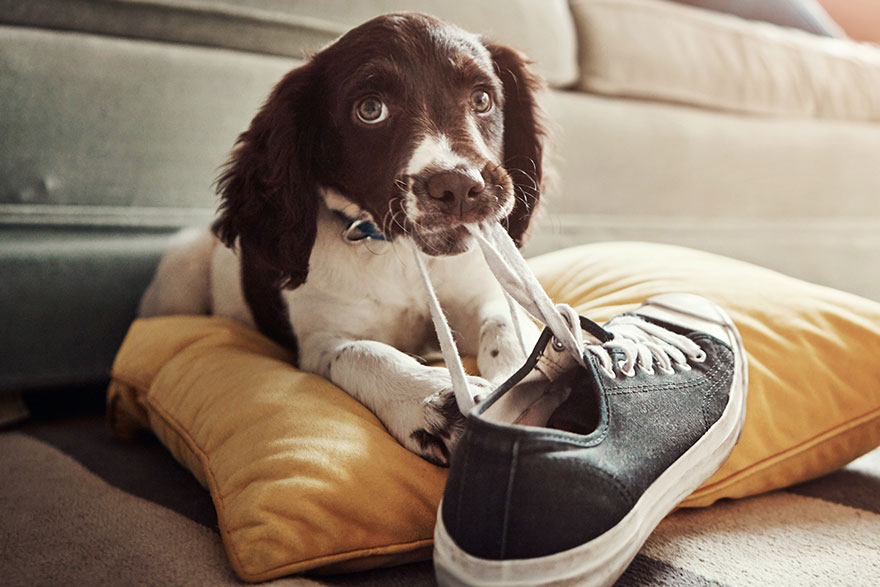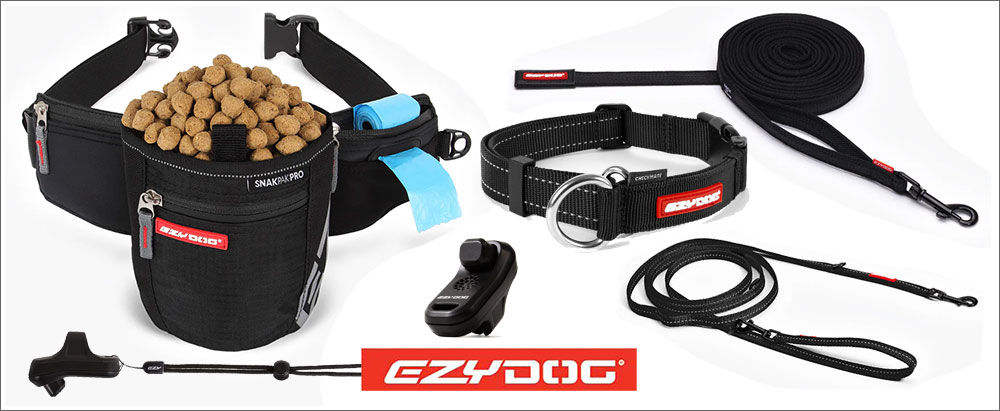
No Command (Dog Training Command 19)
- Share
- Share
- Share
- Share
How to Teach Your Dog No Using The ‘No Command’.
When teaching puppies, or even older dogs for that matter, like children, they don’t know the rules of the house, or what is expected of them from a behaviour point of view. With children, you can sit them down and have a discussion, explaining what is good and what’s not, however, you can’t sit your dog down and have a conversation with them.
The solution, using ‘positive reinforcement’ is to use one or two word ‘commands’ and then teach your dog what response or action is expected from them in order to get a ‘reward’, which could be a tasty food treat, praise such as ‘Good Boy/Girl’ or rubs and hugs.
There are times and situations where we don’t want our dog to do something. Previously, we taught our dog to wait, which was a way of putting their desired action on pause, or on hold, until we released them using the ‘Okay Command’, which could be thought of as pushing ‘Play’, letting them know they could continue doing what they wanted.

Then there are times where we want to let our dog know not to do something, in other words we want to let them know what they are doing is not good and they should not do what they’re doing.
This obedience training article for dogs will teach you how to teach your dog to stop doing an action and not to repeat the behaviour using the ‘No Command‘ until they hear the release word ‘Okay’ or are given another command such as ‘Come’. As always from PetsBook, we will be adopting positive reinforcement training techniques to get the message across.
The following list is what I recommend you have handy for this dog training command session:
- Small sized, soft treats that are very tasty
- Clicker
- Quiet space with no distractions
If you don’t have, or prefer not to use a ‘clicker’, you can substitute it by using the word ‘yes’.

Dog training essentials available from Ezydog Australia
Steps to Teaching the ‘No Command’
1/ Start by sitting on the floor with your dog sitting, facing you about 2 metres away. Place a tasty treat on the floor
2/ As your dog reaches or steps forward for the treat, Say ‘No’. Continue to say this command every time your dog reaches for the treat
3/ Once your dog stops reaching for the treat, wait five seconds, then reward them. Make sure to reward your dog from your hand, not from the floor and as you do use the release command ‘Okay’
4/ When your dog gets the hang of it, place five treats out in front of them, saying ‘No’ each time you place a treat on the floor. If they’re calm for five seconds, pick up all five treats and reward your dog with a tasty treat from your hand
5/ As your dog progresses, begin to place the treats within their reach
6/ If your dog goes for the treats, attempt to stop them with the ‘No Command’. You can also introduce a hand signal by raising your right-hand shaking left to right with one finger up, like you would to a child as you say the command, which will break your dog’s focus on the treat
7/ Continue to move treats progressively closer and closer to your dog
8/ Once your dog master’s the technique with you sitting on the floor, change location and repeat with you standing up this time. If your dog doesn’t respect the command ‘No’ in this setting, move back onto the floor and repeat the previous steps
Positive reinforcement dog training is effective when done with love and patience. Using a stern voice does not mean yelling at your beautiful pooch, and he/she should not feel they’re being punished. Dogs that are punished often become nervous and fearful and show more behavioural problems.

Your fur baby, by their very nature is ready and eager to please you, but sometimes they’re just going to do something you’re not happy with, so be direct in your commanding, but not aggressive.
Remember too, there is no point shaking your finger at them and saying no for something they did a while ago that you’ve only just realised, they’ve done. They can’t correlate the command you’re giving them now to a past behaviour.
Summary of How To Teach Your Dog The ‘No Command’
At the risk of being repetitive, consistency, practice and patience are the keys to dog training success. Any dog, young or old can be taught to understand tasks using positive, force-free training techniques.
But sometimes, figuring out why your dog isn’t picking up the correct behaviour can be difficult.
Pet Behaviourists may need to be engaged to basically unpick anxious or stressed dogs, sometimes seen with ‘rescue dogs’ that may have been exposed to negative training methods.
Some dogs that aren’t overly motivated by food treats (rare) will almost certainly take to cooked chicken pieces. However, I would strongly suggest finding a commercial option that works because apart from the expense, chicken is messy and doesn’t last very long out of a sealed container in the fridge.
Pet shops have many brands and flavours to choose from these days, and many are made with healthy natural ingredients. I would also suggest using and rotating several different types, so your dog doesn’t become used to just one.
The most important point with using treats as a reward for good behaviour is that they must be tempting enough to make your dog abandon the unwanted behaviour.
Having trouble, or have a question about getting your dog to obey the ‘No Command’?
Leave a comment for ‘Bear’ below and he’ll be happy to answer it for you, especially if you get his attention by using his name.
We at PetsBook also recommend getting out with your dog and join a training course.
Pet Directory has many dog training clubs listed near you with experienced and accredited dog trainers, ready to help you with dog obedience and dog command training.
» List of Dog Training Commands

Hi, I’m Bear, the Training Manager at PetsBook. With over 20 years experience using positive reinforcement dog training techniques, I’m proud to have the opportunity to help you develop a stronger bond with your fur baby, by teaching you useful commands with obedience training.
- Cat Behaviour & Training 1
- Cat Care 1
- Cat Health 1
- Cats 3
- Dog Behaviour & Training 38
- Dog Care 1
- Dog Grooming 2
- Dog Health 1
- Dogs 42
After A Product or Service for Your Pet?
PetsBook's Pet Directory is the easy way to find everything you need to take care of your 'fur baby'.
ABN: 97 675 528 953






